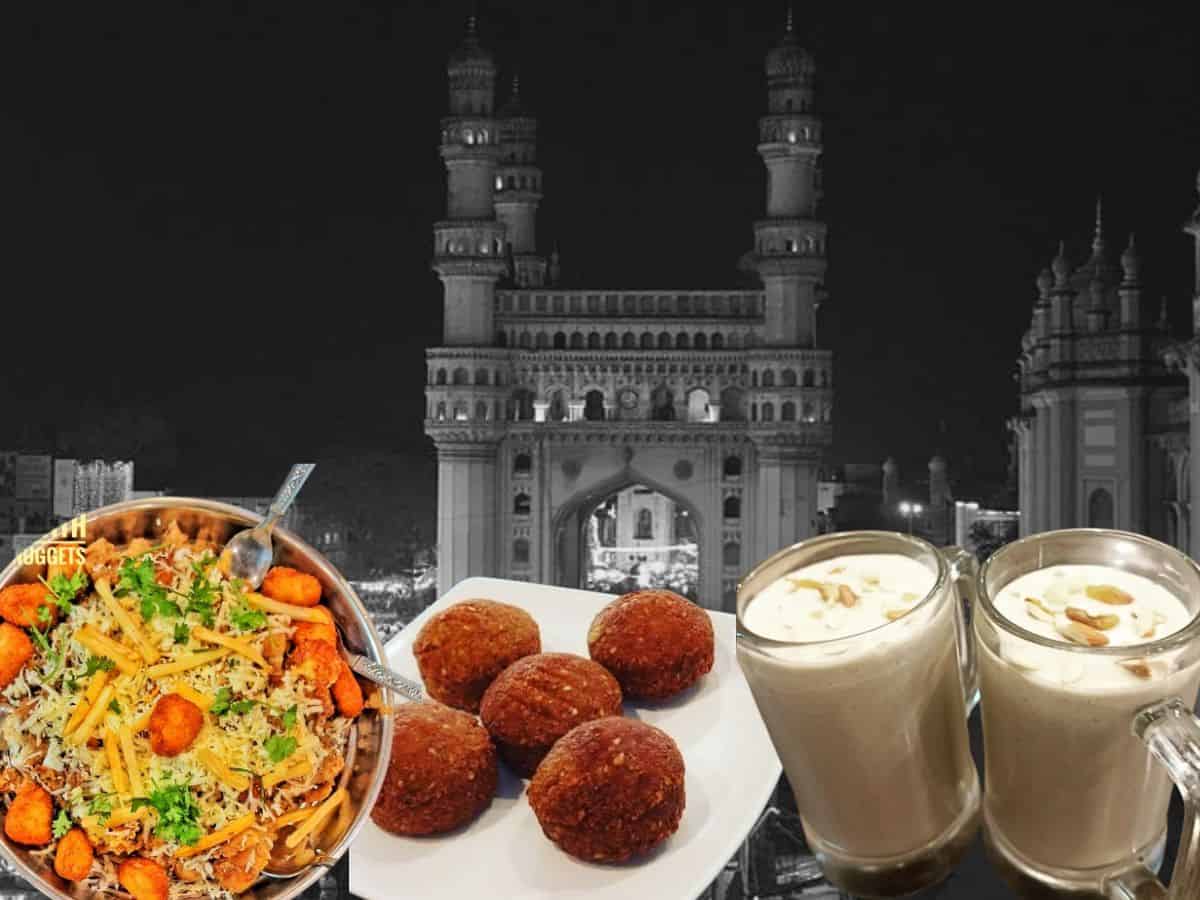Every time you zoom past the gate of Paramount Colony, you’re instantly transported to a world that feels far from Hyderabad. Shops line the streets, offering camel milk, Sudanese bukhoor, flowing jilbabs, Somalian qahwe, and a host of other treasures from East Africa.
As you stroll through, people can be seen relaxing on plastic chairs, gathered around qahwa carts, sipping steaming cups of coffee and tea. The soft murmur of conversation creates a sense of community in this area of Tolichowki, which has come to be known as ‘Mini Somalia’ or ‘Somali Land’.
What further sets this neighborhood apart is, of course, its culinary scene. Where everyone in Hyderabad crazes over the famed biryani and haleem, the Sudanese and Somalians in this area have created a home away from home through their unique restaurants.
A taste of Africa in Hyderabad
There are several restaurants peppered around Paramount Colony that offer a slice of East African culture through its rich culinary traditions. One such gem is Tafosha Cafe run by Mohammed Shakil.
While Shakil hails from Mumbai, his 20 years in Yemen have contributed to his strong hold on the Arabic language and knowledge of African cuisine. These experiences have made his cafe a popular destination for the Somalian and Sudanese communities in Hyderabad.
“This cafe was originally started by a Sudanese owner in 2021, which contributes to its authenticity. When I took over in July, I ensured that we remained true to the traditional flavors of Somalia and Sudan, which is why our chef is also Sudanese,” he explains.
Although Tafosha welcomes Hyderabadi locals, Shakil’s primary focus remains on serving these two communities. This dedication to preserving the culinary experience of these cultures is reflected in the unique menu that is curated specially for each day of the week.
Savoring authentic dishes
One glance through the menu and you can see names unknown to any average Hyderabadi.
“For someone who is a beginner to East African cuisine, I would suggest foul which is made of creamy fava beans, seasoned with special Somalian or Sudanese spices. There are four variations in foul based on their origins: foul hummus, foul musallah, foul with liver, and fattah foul musallah,” Shakil tells Siasat.com.
Other dishes that seem to stand out are the Fahita Chicken, Agashi Chicken (barbeque chicken), Zigny (lamb stew), Aseeda Naiemia Tagiya, Regla (Kulfa with lamb), Bamia (Okra with lamb), and Salat Aswad (Eggplant salad).
Notably, there is one similarity between Hyderabadi and African cuisine- Paaya, or kawaree, which features cow’s trotters. However, this dish distinguishes itself from Hyderabadi paaya in several ways. The spices used in kawaree create a unique flavor profile and are characterized by a thicker, more robust broth, which enhances its hearty appeal. The dish is traditionally made using very tender meat, lending it a texture that sets it apart from its Hyderabadi counterpart.
Another unique aspect of this cuisine is that rice is not a staple in daily Sudanese meals due to several factors, including war, drought, and flooding in the region. “Since the café was originally started by a Sudanese, I decided to maintain that authenticity by not introducing rice in the menu,” he says.
In addition, Somali cuisine features a unique practice of pairing bananas with nearly every meal. This tradition arises from Somalia’s rich agricultural landscape, where bananas are abundant and easily accessible.
Shakil also points out that peanuts are a key ingredient in approximately 50% of the dishes served and spices are often used sparingly because the hot climate in many African countries affects the way flavors are developed. The richness of peanuts enhances the dishes, providing depth and creaminess without the need for an abundance of spices. This culinary approach allows the natural flavors of the ingredients to shine, reflecting the simplicity of African cooking.
Distinct from Middle Eastern cuisine
Hyderabad has long been celebrated for its love of Arab cuisine, with dishes like shawarma, mandi, and kebabs dominating the food scene. But in this melting pot of cultures, African cuisine is often mistaken for Arab food. While they share some spices and ingredients, Somalian and Sudanese dishes have their own rich, distinctive flavors.
According to Shakil, chefs in Sudan and Somalia typically avoid using olive oil, opting for sesame oil instead. Additionally, East African dishes tend to be milder than Middle Eastern dishes. They often feature only one or two types of spices, resulting in a culinary experience that highlights the natural flavors of the ingredients.
Moreover, Somali and Sudanese cooks often combine vegetables like okra, kulfa, eggplant, and potatoes with meat, creating hearty, balanced meals. This practice contrasts with some Middle Eastern dishes that may focus more heavily on meat alone.
As patrons indulge in these distinctive dishes, they not only satisfy their appetites but also gain an appreciation for the traditions and stories behind each meal. In a city where diverse cultures intersect, this hidden gem serves as a reminder of the beauty found in culinary diversity, inviting everyone to embrace and celebrate the flavors of Africa right in the heart of Hyderabad.







